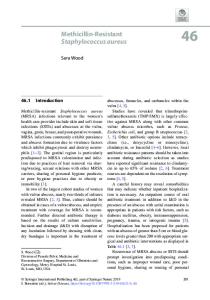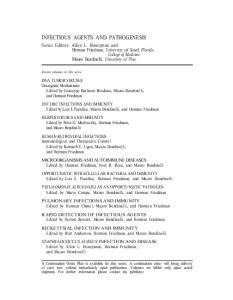Prevalence of Panton-Valentine leukocidin in methicillin-resistant Staphylococcus aureus clinical isolates at a universi
- PDF / 1,192,981 Bytes
- 7 Pages / 595.276 x 790.866 pts Page_size
- 81 Downloads / 290 Views
(2020) 13:490 Amin et al. BMC Res Notes https://doi.org/10.1186/s13104-020-05339-0
Open Access
RESEARCH NOTE
Prevalence of Panton‑Valentine leukocidin in methicillin‑resistant Staphylococcus aureus clinical isolates at a university hospital in Northern Cyprus: a pilot study Danyar Hameed M. Amin1, Emrah Guler1 and Buket Baddal1,2*
Abstract Objective: Panton-Valentine leukocidin (PVL)-positive methicillin-resistant Staphylococcus aureus (MRSA) is a healthcare problem worldwide. There are no reports on the virulence characteristics of MRSA in Northern Cyprus (NC). This study aimed to determine the presence of pvl among MRSA isolates from patients admitted to a university hospital in NC using molecular methods. Fifty S. aureus strains were included in this study. BD Phoenix automated identification system was used for bacterial identification and antibiotic susceptibility testing. Methicillin resistance was confirmed by disc diffusion assay. Presence of nuc and mecA genes was tested by multiplex PCR. Detection of pvl gene was performed by single-target PCR. Results: Out of 50 S. aureus isolates identified as MRSA by BD Phoenix system, 3 were susceptible to cefoxitin with disc diffusion assay and were confirmed as methicillin-sensitive S. aureus (MSSA). All isolates (n = 50, 100%) tested positive for the presence nuc gene and 68% (n = 34/50) were mecA positive. pvl was detected in 27.7% (n = 13/47) of the MRSA isolates. Among PVL-positive MRSA isolates, 69.2% (9/13) were inpatients. PVL-MRSA was more common in isolates from deep tracheal aspirate (30.8%, 4/13) and abscess/wound (23.1%, 3/13). This represents the first study of PVL presence among MRSA in hospital setting in NC. Keywords: Methicillin-resistant Staphylococcus aureus, Panton-Valentine leukocidin, PCR, Virulence, Prevalence, Northern Cyprus Introduction Staphylococcus aureus, particularly methicillin-resistant S. aureus (MRSA), is a major human pathogen which causes both hospital- and community-acquired infections worldwide [1]. MRSA is commonly associated with skin and soft tissue infections (SSTIs), as well as pneumonia, bacteremia, and sepsis [2]. β-lactam antibiotic *Correspondence: [email protected] 1 Department of Medical Microbiology and Clinical Microbiology, Faculty of Medicine, Near East University, Near East Boulevard, 99138 Nicosia, Cyprus Full list of author information is available at the end of the article
resistance in MRSA is attributed to the acquisition of mecA gene encoding the transpeptidase penicillin-binding protein 2a [3], and is a molecular hallmark for MRSA strains. The mecA gene is located on a mobile genetic element, the staphylococcal cassette chromosome mec (SCCmec), with at least 13 different types of SCCmec reported to date [4]. More recently, new mecA homologues mecB, mecC and mecD have also been identified to confer resistance to β-lactam antibiotics [5–7]. MRSA infections have been traditionally classified as either community-associated (CA-MRSA) or healthcare-associated MRSA (HA-MRSA). From a molecular stan
Data Loading...











